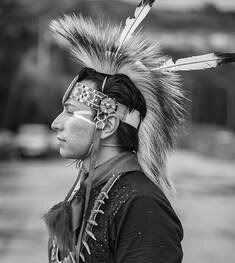
REPARATIONS FOR WHOM?
A Community Conversation on Intersectionality
Part 1: U.S.A.
July 11, 2017
In the U.S., the word or call for "reparations" is strongly associated with making amends for the atrocities and injustices experienced by Black Americans, which are a part of the U.S.'s socio-economic fabric. Yet, on this land, with our array of co-existing cultures and shared histories, injustice is just as multi-dimensional.
Join us for Reparations for Whom?: U.S.A. -- the first of several Reparations365 community conversations where we will explore the inherent intersectionality of a call for reparations. We will take a closer look at domestic reparations efforts, including those for indigenous peoples and for Japanese families interned in the U.S. during WWII. What has already been accomplished in the spirit of reparations in U.S.? What concrete lessons can we learn from these accomplishments? What's in motion now and where is there opportunity for solidarity? Special guests will inform the conversation.
Special guests include Sasha Hohri, a key activist involved in the successful effort for reparations for Japanese-Americans interned by the U.S. government during World War II, and Sheldon Raymore from American Indian Community House.
BIOS OF SPECIAL GUESTS
Sasha Hohri is a founding member of Concerned Japanese Americans (CJA) and was co-chair of East Coast Japanese Americans for Redress -- groups that were formed in the 1980s to advocate for redress and reparations for Japanese-Americans incarcerated during World War II. They were part of a national movement whose pressure led the United States government to pass the Civil Liberties Act in 1988, which awarded $20,000 dollars to each of the surviving internees or their descendants of the World War II camps for Japanese-Americans. She also served as a member of the board of the United Asian Communities Center.
Sheldon Raymore of the Cheyenne River Sioux Tribe is the Health Outreach Coordinator at the American Indian Community House established in 1969, which is the oldest Native American Urban Indian Center in New York City. On April 29th, 1868 The Fort Laramie Treaty, pledged that the Great Sioux Nation's Reservation, included the Black Hills, would be "set apart for the absolute and undisturbed use and occupation of the Indians. Shortly after Sheldon's birth in 1980 the United States v. Sioux Nation of Indians, 448 U.S. 371 supreme court case held that: 1) the enactment by Congress of a law allowing the Sioux Nation to pursue a claim against the United States that had been previously adjudicated did not violate the doctrine of separation of powers; and 2) the taking of property that was set aside for the use of the tribe required just compensation, including interest. Sioux tribal lobbyists persuaded Congress to pass yet another law conferring authority on the Claims Court to hear the Sioux case, this time without regard to res judicata. That meant the Sioux could re-litigate the claim as a Fifth Amendment taking, to collect 100 years' worth of interest. Finally, under its new authorizing statute, the Claims Court held the Sioux had suffered a taking cognizable under the Fifth Amendment, and were entitled to the value of the land as of the 1877 taking which was $17.1 million, the value of gold prospectors illegally took out of the land computed at $450,000, and 100 years' worth of interest at 5% per year which would be an additional $88 million. The Sioux have declined to accept the money, because acceptance would legally terminate Sioux demands for return of the Black Hills. The money remains in a Bureau of Indian Affairs account accruing compound interest. As of August 24th, 2011 the Sioux interest on their money has compounded to over 1 billion dollars. The movement for justice and return of the Black Hills to the Great Sioux Nation will be discussed during this community conversation.
This series is made possible by a Humanities New York Action Grant, by the New York State Council on the Arts with the support of Governor Andrew Cuomo and the New York State Legislature, and from many individual donors.

